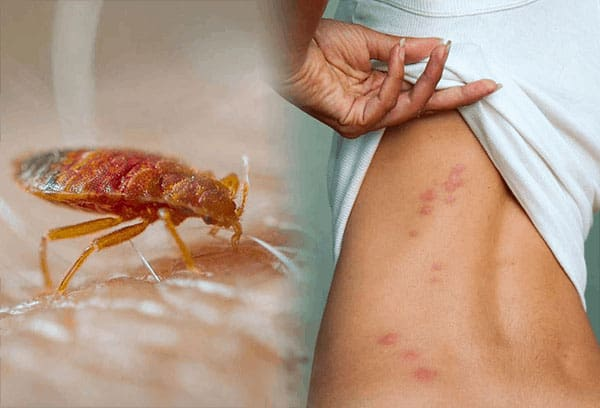Waking up with itchy, red bumps and no clear culprit is frustrating. Pet owners might immediately suspect fleas, but if there’s no sign of them, mysterious bites could be due to a variety of sources. Here’s a closer look at what might be biting you at night and effective steps to resolve this unsettling problem.

Recognizing Bed Bug Bites
One of the first clues to solving nighttime bites is examining the appearance of the marks. Bed bug bites typically show up in clusters or lines on exposed skin areas, like the arms, neck, and face. They appear red, slightly swollen, and very itchy. This pattern can distinguish them from flea bites, which are more common on lower legs and ankles.
Exploring Household Pests That Bite
Various pests can be responsible for nighttime bites, including fleas, bed bugs, mites, and even mosquitoes. Each pest behaves differently and hides in distinct areas of the home, so understanding their habits is crucial for pinpointing the problem.
- Fleas: Common in carpets, bedding, and furniture, fleas may go unnoticed, especially in their early stages.
- Bed Bugs: These pests hide in small crevices around mattresses, bed frames, and behind wallpaper, emerging only at night to feed.
- Mosquitoes: Though less common indoors, mosquitoes can slip inside through open windows, leaving random itchy bites.
- Mites: While most mites don’t bite humans, scabies mites are an exception, burrowing into the skin and causing intense itching.
Identifying specific bite characteristics can help narrow down potential causes.
Can Fleas Be Present Without Being Seen?
Fleas may not always be visible, especially if they’re hidden in carpets, furniture, or pet bedding. Even if you don’t see them on your pets, fleas could still be around. Fleas have stages (larval and pupal) that are nearly impossible to spot with the naked eye. Regularly checking pets and vacuuming can reveal signs of flea activity, like dark “flea dirt” (feces) on pet bedding or carpets.
The Elusive Bed Bug: A Hard-to-Spot Guest
Bed bugs are notoriously difficult to detect. They hide during the day in mattresses, box springs, bed frames, and wall cracks. At night, they come out to feed, leaving itchy bites in clusters or lines. If you suspect bed bugs, check for tiny blood spots on sheets or small dark droppings around mattress seams. A flashlight can help reveal these signs.
Dust Mites and Skin Irritation
While dust mites don’t bite, they can cause skin irritation for sensitive individuals. Dust mites feed on dead skin cells and thrive in bedding and upholstered furniture. People with sensitivities to dust mites might experience eczema or worsened allergies, leading to red, itchy skin that could feel like insect bites.
Pet-Related Parasites: Fleas and Ticks
For pet owners, fleas and ticks are a constant concern. Fleas can transfer from pets to bedding, especially if pets sleep nearby. Although ticks are less common indoors, they can latch onto pets during outdoor activities and fall off indoors, potentially biting humans. Regular grooming and flea/tick prevention treatments can greatly reduce the chance of these pests spreading indoors.
Other Possible Culprits: Mites, Lice, and Unknown Irritants
Beyond fleas and bed bugs, other less common insects could be responsible:
- Scabies Mites: These mites burrow into the skin, causing intense itching and red bumps, typically on hands and wrists. Scabies requires medical treatment.
- Body Lice: Living in clothing and bedding, body lice come into contact with skin only to feed, causing itchy red bumps, often where clothes touch the skin.
Could It Be an Allergy or Skin Sensitivity?
Sometimes, what feels like a bug bite might actually be an allergic reaction. New laundry detergents, fabrics, or skincare products can cause skin irritation. If you’ve recently changed products, try returning to your usual ones to see if the irritation subsides.
Steps to Identify the Source of Nighttime Bites
If the cause of your bites is still unknown, a systematic approach can help:
- Inspect Bedding and Mattresses: Use a flashlight to check for signs of bed bugs in seams and corners.
- Check Pets Thoroughly: Look for flea dirt or ticks, especially if pets have been outdoors recently. Regular grooming can help reveal hidden pests.
- Track Bite Patterns: Note when and where bites appear; patterns may help identify the type of pest.
- Set Glue Traps or Monitors: Placing glue traps or bed bug monitors around your bed can capture small pests and provide clues to what’s biting you.
Effective Pest Control Strategies
Once you’ve identified the possible cause, here are effective steps to manage the situation:
- For Fleas: Wash pet bedding frequently, use flea treatments, and vacuum regularly.
- For Bed Bugs: Wash all bedding and linens in hot water and dry them on high heat. Professional pest control services may be needed for severe cases.
- For Dust Mites: Use hypoallergenic mattress covers, wash bedding regularly in hot water, and keep your home dust-free.
- For Lice or Mites: In cases of body lice or scabies, wash all clothing and bedding in hot water and consult a healthcare provider for treatment.
When to Call Professional Help
If DIY methods don’t resolve the issue, consider contacting a professional pest control service. Experts have access to stronger treatments and can inspect areas you may overlook, particularly for severe flea or bed bug infestations.
Preventing Future Bites and Infestations
A few proactive steps can help maintain a pest-free environment:
- Seal Cracks and Crevices: These spaces are common hiding spots for pests.
- Maintain Cleanliness: Regular cleaning of bedding, floors, and furniture can reduce the chance of infestations.
- Limit Pet Access to Beds: Minimizing pet time on the bed can prevent fleas and ticks from spreading.
- Use Protective Covers: Mattress encasements can keep bed bugs and dust mites from nesting in your bedding.
Conclusion
Waking up with unexplained bites can be both frustrating and concerning. By identifying potential sources and taking proactive measures, you can address this issue effectively. With patience, careful observation, and the right strategies, you’ll soon be able to reclaim a peaceful, itch-free night’s sleep. Remember these tips to keep your bedroom a clean, comfortable sanctuary for you—and your pets!





